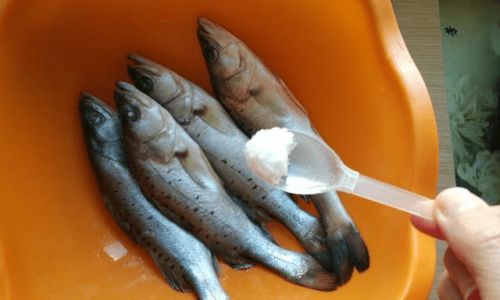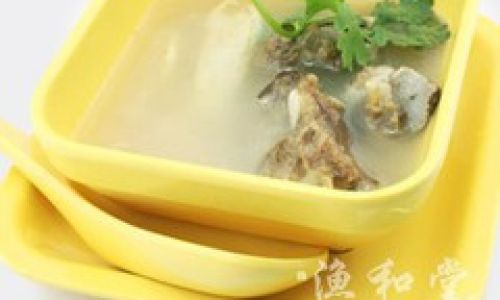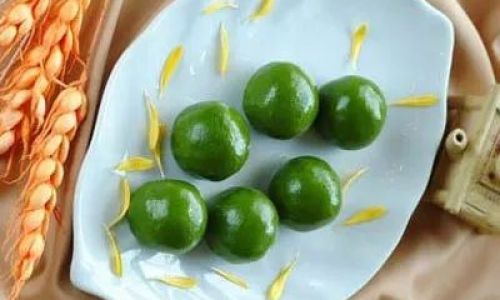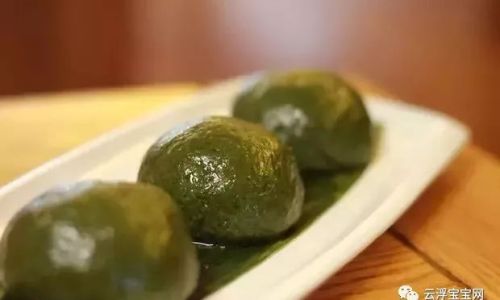Introduction
In the realm of traditional Chinese cuisine, there lies a treasure trove of dishes that not only tantalize the taste buds but also nourish the body. Among these culinary gems, milk-braised fish maw stands out as a perfect blend of flavor and health benefits. Known for its soft, silky texture and rich, creamy taste, this dish is a favorite among those seeking both culinary delight and dietary nourishment. This article aims to provide a comprehensive guide to making this delightful and nutritious delicacy at home, using simple, household ingredients and straightforward cooking techniques.
Understanding Fish Maw: A Nutritious Ingredient
Before diving into the recipe, it’s essential to understand the star ingredient of our dish: fish maw. Fish maw, also known as swim bladder or fish bubble, is a collagen-rich organ found in the abdominal cavity of certain fish species. It is highly valued in Chinese cuisine for its ability to nourish the skin, strengthen the immune system, and promote overall health. Its gelatinous texture and mild flavor make it an ideal base for various dishes, including soups, stews, and braises.
When selecting fish maw for cooking, look for pieces that are firm, translucent, and free of odors. Fresh fish maw is preferable, but dried versions are also widely available and can be soaked in water to restore their texture before use.

The Benefits of Milk-Braised Fish Maw
Milk-braised fish maw combines the nourishing properties of fish maw with the creamy richness of milk, creating a dish that is both comforting and beneficial. Milk is rich in calcium, vitamins, and essential nutrients that support bone health, digestion, and overall well-being. When combined with fish maw, the dish becomes a powerhouse of collagen and other nutrients, making it ideal for skin rejuvenation, immune boosting, and overall vitality.
Moreover, the slow-cooking process used in braising helps to break down the collagen in fish maw, making it more easily absorbed by the body. This not only enhances the dish’s nutritional value but also contributes to its soft, melt-in-your-mouth texture.
Gathering the Ingredients
To make milk-braised fish maw at home, you will need the following ingredients:
- Fish Maw: 200-300 grams (fresh or dried, soaked if dried)
- Fresh Milk: 500 milliliters (full-fat or low-fat, according to preference)
- Ginger: 3-4 slices (for flavor and to counteract any fishy odor)
- Scallions: 2 (finely chopped, for garnish)
- Salt: To taste
- White Pepper: A pinch (for flavor)
- Chicken or Vegetable Broth: 200 milliliters (optional, for added flavor)
- Cornstarch Slurry: 1-2 tablespoons cornstarch mixed with a little water (for thickening, if desired)
- Sesame Oil: A few drops (for aroma)
Additionally, you may opt to add other ingredients such as red dates, goji berries, or ginseng for extra nourishment and flavor. These ingredients are known for their health benefits and can enhance the overall taste profile of the dish.
Preparing the Fish Maw
Before cooking, the fish maw needs to be thoroughly cleaned and prepared. If using dried fish maw, soak it in cold water for several hours or overnight until it softens and expands. Once softened, rinse it under running water to remove any impurities.
For fresh fish maw, rinse it under cold water and gently scrape away any adhering scales or membranes. Cut the fish maw into bite-sized pieces, ensuring they are of uniform size for even cooking.
Cooking the Fish Maw
Now, let’s dive into the cooking process. Begin by boiling a pot of water and adding the fish maw pieces. Blanch them for about 2-3 minutes to remove any remaining impurities and to slightly firm up the texture. Remove the fish maw with a slotted spoon and set it aside.
In the same pot, add the ginger slices and bring the water back to a boil. This step helps to infuse the cooking liquid with ginger’s aromatic and slightly pungent flavor, which complements the fish maw beautifully.
Next, add the blanched fish maw pieces back into the pot. Pour in the fresh milk and chicken or vegetable broth (if using). Stir gently to combine and bring the mixture to a gentle simmer.

Simmering to Perfection
Reduce the heat to low and let the fish maw simmer gently in the milk mixture. This slow-cooking process is crucial for achieving the dish’s soft, silky texture. Simmer for about 30-45 minutes, or until the fish maw is tender and the milk has thickened slightly due to the collagen released from the fish maw.
During this time, you can taste the broth and adjust the seasoning with salt and a pinch of white pepper. Remember, the flavor should be subtly savory with a hint of sweetness from the milk and fish maw.
Adding Final Touches
If you prefer a thicker consistency, you can add the cornstarch slurry a little at a time, stirring gently to avoid lumps. Continue to simmer until the desired thickness is achieved. Be cautious with the cornstarch slurry, as too much can make the dish gluey.
Once the fish maw is tender and the broth has reached the desired consistency, turn off the heat. Drizzle a few drops of sesame oil over the top to enhance the dish’s aroma. Finally, garnish with finely chopped scallions for a burst of fresh flavor and color.
Serving the Dish
Milk-braised fish maw is best served warm, as its creamy texture and rich flavor are fully appreciated at this temperature. Divide the dish into bowls and serve immediately, accompanied by a side of steamed rice or your favorite bread for a hearty meal.
This dish pairs well with a variety of sides, including stir-fried vegetables, pickled vegetables, or a simple salad. The creamy richness of the fish maw and milk complements the crispness and freshness of these sides, creating a balanced and satisfying meal.
Storage and Reheating
If you have leftovers, store the milk-braised fish maw in an airtight container in the refrigerator for up to 2-3 days. When reheating, gently warm the dish over low heat, stirring occasionally to prevent sticking and scorching. Avoid over-reheating, as this can cause the milk to separate and the fish maw to become rubbery.
Creative Variations
While the classic milk-braised fish maw recipe is delicious on its own, there are several variations you can try to suit your taste preferences and dietary needs. For example, you can add sweet potatoes, taro, or lotus root slices to the dish for added texture and nutrition. These ingredients will absorb the flavors of the milk and fish maw, creating a harmonious and satisfying meal.

Alternatively, you can incorporate other nourishing ingredients such as red dates, goji berries, or ginseng. These herbs and berries not only add depth to the dish’s flavor but also contribute to its overall health benefits. Simply soak the dried ingredients in water for a few hours before adding them to the simmering milk and fish maw.
For a vegetarian version, you can substitute the fish maw with tofu or other plant-based collagen substitutes. While these substitutes won’t provide the same nutritional benefits as fish maw, they can still create a delicious and satisfying dish.
Conclusion
In conclusion, milk-braised fish maw is a delightful and nourishing dish that combines the rich flavors of milk and fish maw with the health benefits of collagen and other nutrients. By following the steps outlined in this guide, you can easily make this dish at home using simple, household ingredients and straightforward cooking techniques.
Whether you’re looking for a comforting meal after a long day or a nutritious dish to support your overall health, milk-braised fish maw is an excellent choice. Its soft, silky texture and creamy flavor make it a favorite among all age groups, and its versatility allows for endless creative variations.
So, why wait? Gather your ingredients, roll up your sleeves, and start cooking. With a little patience and love, you’ll soon be enjoying a bowl of delicious, nourishing milk-braised fish maw that’s sure to become a staple in your household.
Further Exploration of Chinese Culinary Traditions
Milk-braised fish maw is just one example of the rich and diverse culinary traditions of Chinese cuisine. From stir-fries and dumplings to soups and stews, there is a vast array of dishes to explore and enjoy. Each dish is not only a culinary delight but also a reflection of China’s rich history, culture, and philosophy.
As you continue your journey through Chinese cuisine, consider trying other nourishing dishes such as double-boiled soups, herbal teas, and rice porridges. These dishes often incorporate traditional Chinese herbs and ingredients that are believed to promote health and well-being. By incorporating these dishes into your diet, you can not only enjoy their delicious flavors but also benefit from their nourishing properties.
Moreover, as you explore Chinese cuisine, don’t be afraid to experiment and create your own dishes. The beauty of Chinese cooking lies in its adaptability and creativity. By combining different ingredients,




0 comments